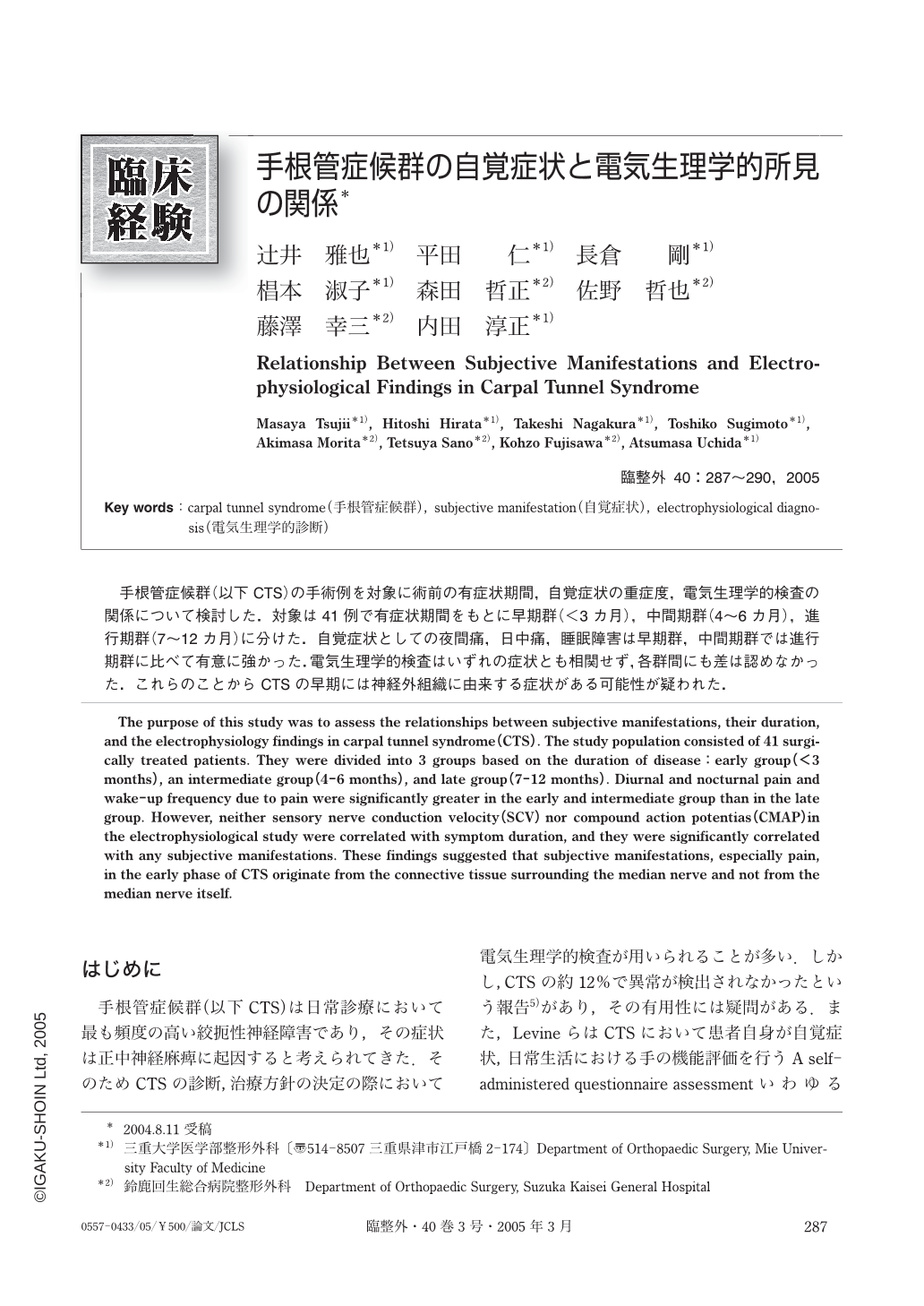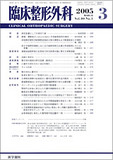Japanese
English
- 有料閲覧
- Abstract 文献概要
- 1ページ目 Look Inside
手根管症候群(以下CTS)の手術例を対象に術前の有症状期間,自覚症状の重症度,電気生理学的検査の関係について検討した.対象は41例で有症状期間をもとに早期群(<3カ月),中間期群(4~6カ月),進行期群(7~12カ月)に分けた.自覚症状としての夜間痛,日中痛,睡眠障害は早期群,中間期群では進行期群に比べて有意に強かった.電気生理学的検査はいずれの症状とも相関せず,各群間にも差は認めなかった.これらのことからCTSの早期には神経外組織に由来する症状がある可能性が疑われた.
The purpose of this study was to assess the relationships between subjective manifestations, their duration, and the electrophysiology findings in carpal tunnel syndrome (CTS). The study population consisted of 41 surgically treated patients. They were divided into 3 groups based on the duration of disease:early group (<3months), an intermediate group (4-6months), and late group (7-12months). Diurnal and nocturnal pain and wake-up frequency due to pain were significantly greater in the early and intermediate group than in the late group. However, neither sensory nerve conduction velocity (SCV) nor compound action potentias (CMAP) in the electrophysiological study were correlated with symptom duration, and they were significantly correlated with any subjective manifestations. These findings suggested that subjective manifestations, especially pain, in the early phase of CTS originate from the connective tissue surrounding the median nerve and not from the median nerve itself.

Copyright © 2005, Igaku-Shoin Ltd. All rights reserved.


